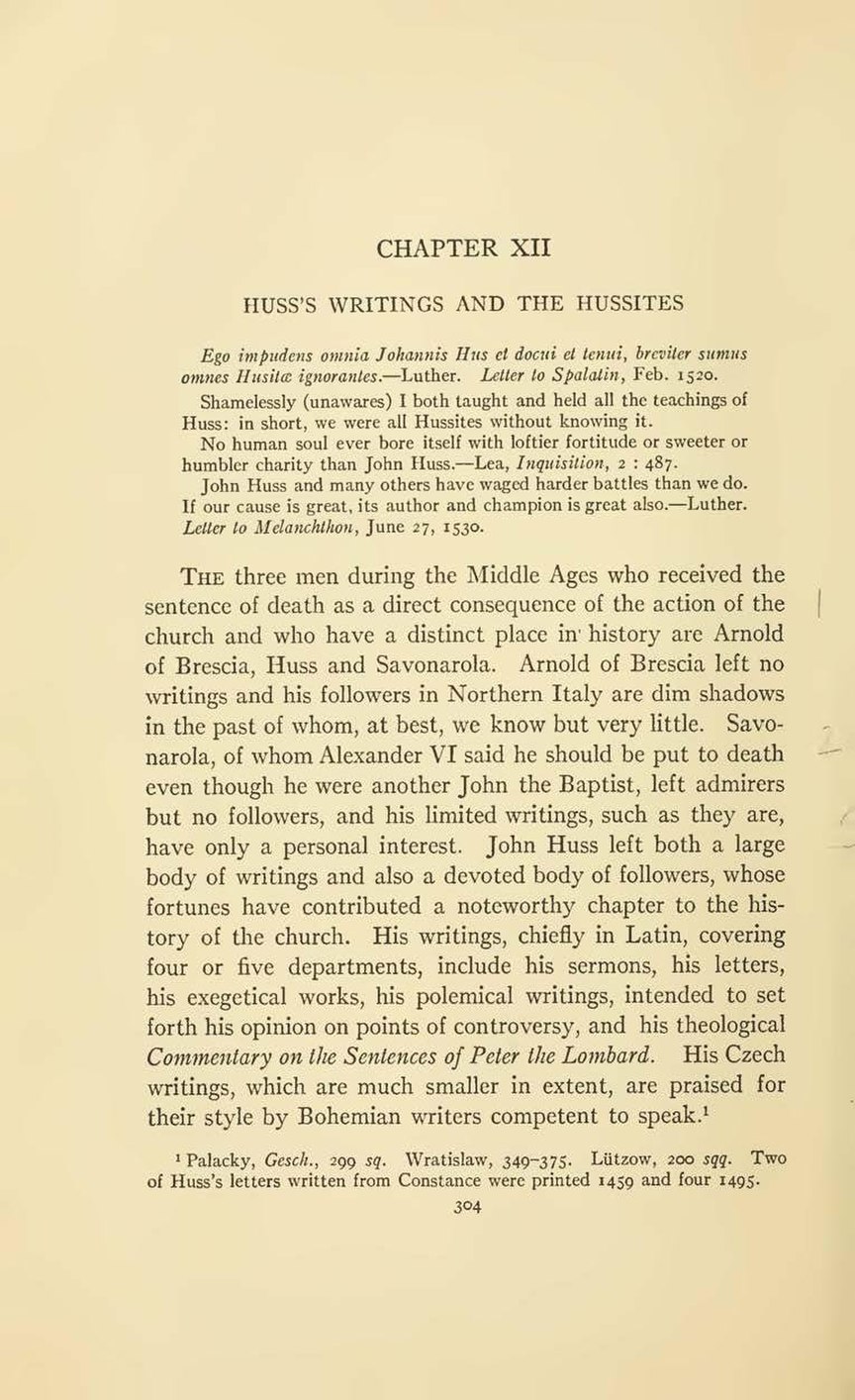CHAPTER XII
HUSS’S WRITINGS AND THE HUSSITES
Ego impudens omnia Johannis Hus et docui et tenui, breviter sumus omnes Husita ignorantes.—Luther. Letter to Spalatin, Feb. 1520.
Shamelessly (unawares) I both taught and held all the teachings of Huss: in short, we were all Hussites without knowing it.
No human soul ever bore itself with loftier fortitude or sweeter or humbler charity than John Huss.—Lea, Inquisition, 2: 487.
John Huss and many others have waged harder battles than we do. If our cause is great, its author and champion is great also.—Luther. Letter to Melanchthon, June 27, 1530.
The three men during the Middle Ages who received the sentence of death as a direct consequence of the action of the church and who have a distinct place in history are Arnold of Brescia, Huss and Savonarola. Arnold of Brescia left no writings and his followers in Northern Italy are dim shadows in the past of whom, at best, we know but very little. Savonarola, of whom Alexander VI said he should be put to death even though he were another John the Baptist, left admirers but no followers, and his limited writings, such as they are, have only a personal interest. John Huss left both a large body of writings and also a devoted body of followers, whose fortunes have contributed a noteworthy chapter to the history of the church. His writings, chiefly in Latin, covering four or five departments, include his sermons, his letters, his exegetical works, his polemical writings, intended to set forth his opinion on points of controversy, and his theological Commentary on the Sentences of Peter the Lombard. His Czech writings, which are much smaller in extent, are praised for their style by Bohemian writers competent to speak.[1]
- ↑ Palacky, Gesch., 299 sq. Wratislaw, 349–375. Lützow, 200 sqq. Two of Huss’s letters written from Constance were printed 1459 and four 1495.
304
